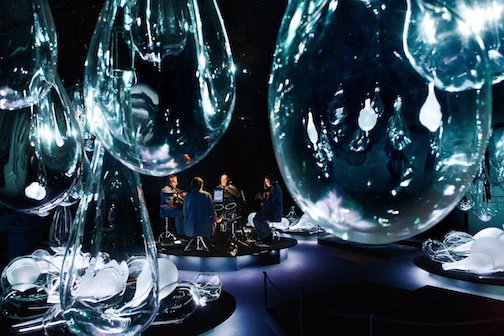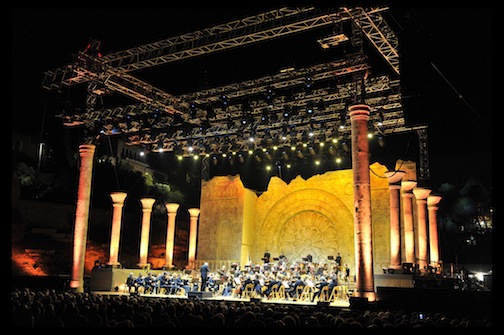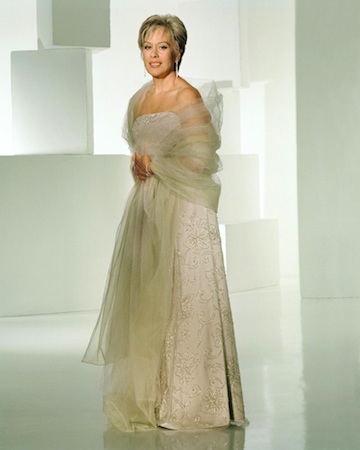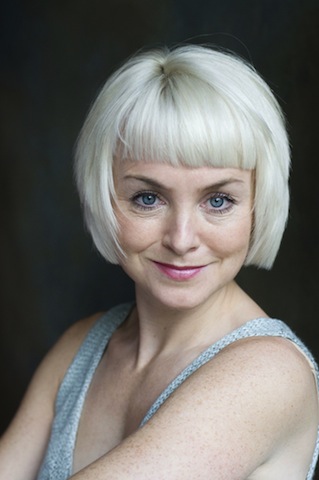This year saw the inauguration of the first Jerusalem Season of Culture. One of the highly acclaimed events of this festival featured performances of Steve Reich’s “Different Trains” staged by the Jewish Theater of Stockholm in collaboration with Jerusalem’s Tower of David Museum.
Performances took place in the "Kishle," in Jerusalem's Old City. This old Turkish barracks and prison, was built on ancient ruins dating to the Roman occupation of the city and could well have been part of the original palace of the Jewish king Herod. One section of this complex still serves today as a police station. The rest is part of the Tower of David Museum and the site has lain derelict for decades. It is currently undergoing archeological excavation and this is the first occasion when it was partially open to the public. This represented a brilliant exploitation of a unique space and although not wheelchair friendly, one can only hope that this exciting venue will be used more frequently in the future.
Steve Reich, one of the foremost American current composers, is at the center of the modern minimalistic music scene and his compositions are highly repetitive. “Different Trains” is a three-movement composition for string quartet interwoven with recorded spoken voices and received a Grammy Award.
The composition relates to the benign pleasurable train journeys from New York to Chicago and Los Angeles undertaken by Steve Reich in his youth. These are contrasted with the tragic train journeys in Europe in the early 40’s which transported Nazi Holocaust victims to the death camps. This is the main focus of the composition. The music and dialog were augmented by movies of trains and scenes from the Holocaust. “Different Trains” was performed by the Swedish ensemble "Fleshquartet" using modern electronic instruments and there were taped recordings for the monotonous repetitive spoken dialog which was fascinating and dovetailed with the music and videos.
The novel staging consisted of about eighty transparent or opaque glass sculptures, designed by the Swedish artist, Ann Wahlstrom, which were suspended from the ceiling or placed on the floor. The four Swedish musicians were seated in the midst of these glass sculptures. At the two ends of the rectangular performance space were screens where the video images of trains and scenes from the Holocaust were projected.

All the dazzling effects of this production were achieved through a combination of music, voices, videos and sculpture together with dramatic lighting. It was put together by Pia Forsgren, director of the Jewish Theater in Stockholm which has become a vital part of contemporary Swedish culture. It premiered in Stockholm in 2008. Ms Forsgren used Reich’s original composition and added to it the video and incorporated the glass installation. This is the first foray of this production outside Stockholm.
Following the Reich work, the quartet played their own exciting composition “Tears Apart,” written as a reflection and commentary on “Different Trains.” In addition to their electronic instruments, the four musicians made musical sounds by playing on the glass sculptures.
Other events in Jerusalem’s Season of Culture included sessions devoted to philosophy and poetry as well as valedictory performances by the Merce Cunningham Dance Company as part of the troupe’s final world tour. The final event was a performance by the renowned soprano Renee Fleming in her first appearance in Israel with the Israel Philharmonic Orchestra and conductor Zubin Mehta.

Renee Fleming is rightly acknowledged as one of the foremost sopranos of the time and this was made abundantly evident in this gala concert which was a fund-raiser for the Richard Tucker Music Foundation. The concert got off to a good start with a lively and dramatic performance of Verdi’s overture to Forza del Destino. Ms Fleming gave a scintillating account of the Jewel song from Gounod’s Faust and a riveting performance of Vissi d’Arte from Puccini’s Tosca. Here she succeeded in spinning out every subtle nuance of the aria like a silken thread.
She was joined in this concert with the up and coming Maltese tenor, Joseph Calleja, who gave an impressive rendering of La Donna e mobile from Verdi’s Rigoletto and E lucevan le stele from Tosca. Calleja’s voice is not of the light Italian lyric quality but is nevertheless an impressive instrument and he was crystal clear in the high, middle and lower registers of the tenor range.
Ms Fleming returned after intermission having changed into another flattering evening gown resplendent with large earrings and necklace. Together with Joseph Calleja there was a wonderful rendition of Parigi, o cara from La Traviata as well as the love duet from Madame Butterfly.
As encores, Ms Fleming gave an unforgettable account of Puccini’s show stopper O mio babbino caro from Gianni Schicchi. She then took a microphone and with audience participation, gave a spectacular rendering of Leonard Cohen’s Hallelujah. The final contribution of the two stars was a lively account of the Brindisi from La Traviata. This represented a fitting end to a great and memorable concert.
According to the organizers of the Jerusalem Season of Culture, it is anticipated that this will become an annual event. One can only hope it does. This certainly gives the Jerusalem public a new cultural perspective and also adds luster of the city.
Illustrations
Fig 1: Stockholm’s Fleshquartet (photo credit Jonas Lindstrom).
Fig 2: The glamorous soprano Renee Fleming (photo credit Andrew Eccles)






